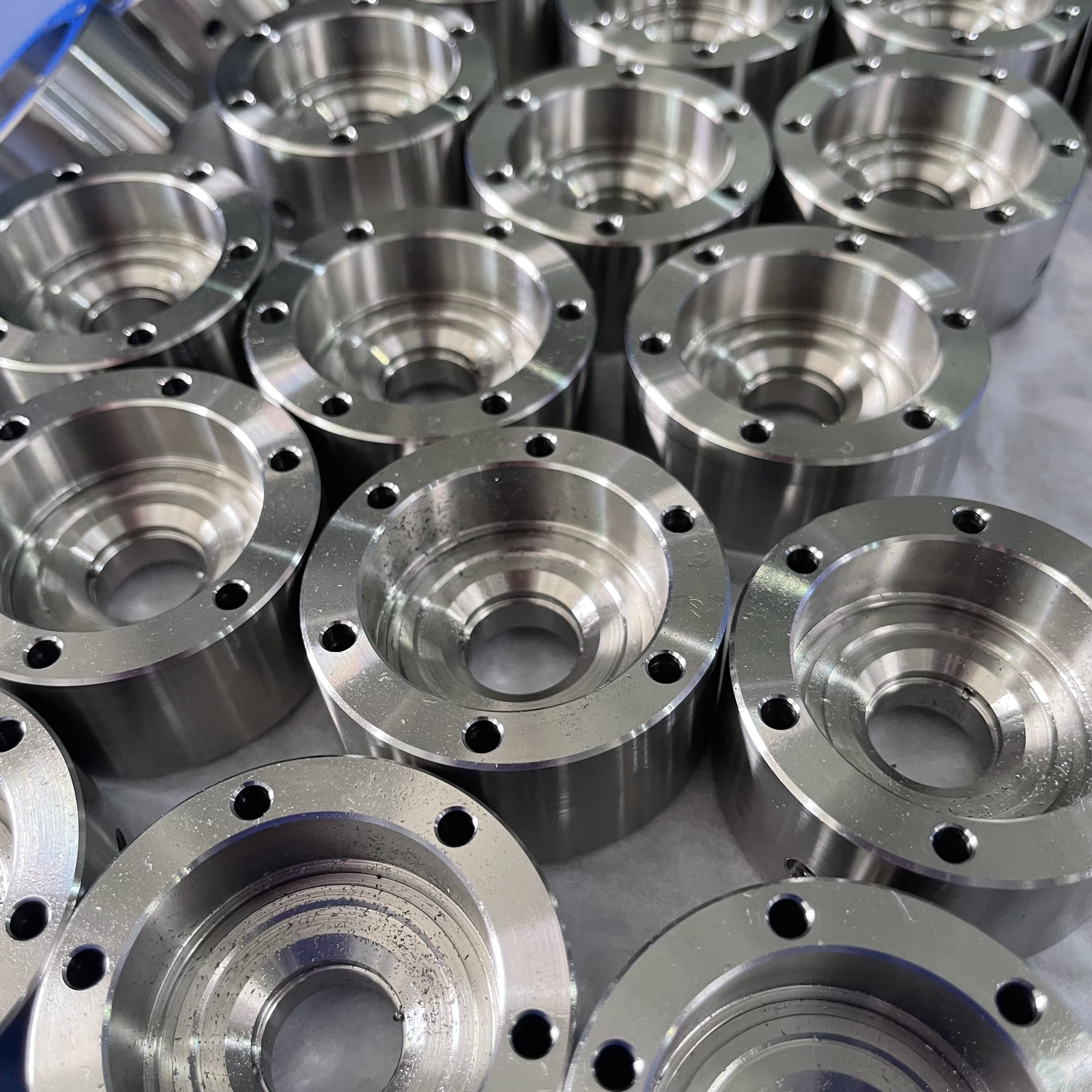5 Essential CNC Drilling Processing Skills for Precision Parts

Introduction to CNC Drilling and Its Importance in Creating Precision Parts
In the realm of manufacturing, CNC drilling plays a pivotal role in the creation of intricate and accurate precision parts. This computer numerical control (CNC) process involves utilizing automated machinery to precisely drill holes and create complex shapes with high accuracy.
What is CNC Drilling?
The role of CNC drilling in manufacturing
CNC drilling is an essential part of the modern manufacturing process, allowing for the creation of components with unparalleled precision. By automating the drilling process, manufacturers can achieve consistent results while minimizing human error.
Why Precision Matters
Examples of precision parts in various industries
The significance of precision in manufacturing can be observed across diverse industries. From aerospace components requiring exact specifications to medical devices demanding flawless accuracy, precision parts are integral to the functionality and safety of countless products.
Understanding the Basics of CNC Drilling
CNC drilling machines are sophisticated pieces of equipment designed to perform precise and intricate drilling operations. These machines consist of several key components, each with specific functions that contribute to the overall accuracy and efficiency of the drilling process.
The CNC Drilling Machine
Key components and their functions
The CNC drilling machine comprises essential elements such as the spindle, drill bit, worktable, and control panel. The spindle serves as the primary rotating component that holds the drill bit in place, allowing for controlled vertical movement during drilling. The worktable provides a stable platform for securing the workpiece, while the control panel houses the interface for programming and monitoring the drilling parameters.
Types of Drills Used in CNC Drilling
Choosing the right drill for different materials
When it comes to CNC drilling, selecting the appropriate drill is crucial for achieving optimal results across varied materials. Common types of drills used include twist drills, center drills, and indexable insert drills. Each type is tailored to specific material properties, ensuring efficient chip removal, minimal tool wear, and precise hole creation.
By understanding the intricacies of these drills and their compatibility with different materials, operators can enhance the overall precision and quality of machined parts.
Key Processing Skills for CNC Drilling
Programming for Precision
Achieving precision in CNC drilling requires a solid foundation in programming skills. Operators must possess the ability to interpret technical drawings and translate design specifications into machine instructions. Basic programming skills encompass understanding geometric dimensions, tolerances, and toolpath strategies. By inputting accurate commands into the CNC system, operators can ensure that each drilling operation adheres to the required specifications, resulting in precision parts with consistent quality.
Material Selection and Handling
The process of creating precision parts through CNC drilling heavily relies on meticulous material selection and handling. Operators must consider various factors such as material hardness, composition, and structural integrity when choosing the appropriate stock for drilling operations. Additionally, proper material preparation is crucial to minimize the risk of workpiece deformation during drilling. This involves securing the material firmly in place to prevent vibrations or shifts that could compromise the accuracy of the machining process.
Monitoring and Adjusting the Drilling Process
Maintaining precision throughout the CNC drilling process necessitates vigilant monitoring and adept adjustment techniques. Operators must continuously assess critical parameters such as spindle speed, feed rate, and tool condition to ensure optimal performance. Implementing real-time adjustments based on feedback from monitoring systems enables operators to address any deviations from desired specifications promptly. By employing advanced measurement tools and inspection techniques, operators can verify the dimensional accuracy of drilled features and make necessary adjustments to uphold precision standards.
Common Challenges in CNC Drilling for Precision Parts
Precision machining through CNC drilling presents a set of challenges that can impact the quality and accuracy of precision parts. Addressing these challenges is crucial for maintaining the integrity of the manufacturing process and ensuring consistent, high-quality results.
Dealing with Material Deformation
Strategies to minimize errors
Material deformation during CNC drilling can lead to dimensional inaccuracies and compromise the functionality of precision parts. To mitigate this challenge, operators must implement effective strategies to minimize errors stemming from material deformation.
Utilize proper fixturing: Securing the workpiece using appropriate fixtures helps prevent material movement and vibration during drilling, reducing the risk of deformation.
Optimize cutting parameters: Adjusting cutting speeds, feed rates, and tool geometries based on material properties minimizes heat generation and associated deformations.
Employ coolant systems: Cooling the workpiece during drilling dissipates heat, preserving material integrity and minimizing the potential for deformation.
By integrating these strategies into the CNC drilling process, manufacturers can effectively combat material deformation and uphold the precision of machined parts.
Overcoming Tool Wear and Breakage
Maintenance tips for longevity and performance
Tool wear and breakage pose significant challenges in CNC drilling, impacting both productivity and part quality. Overcoming these issues requires proactive maintenance practices aimed at enhancing tool longevity and sustaining optimal performance.
Regular tool inspection: Implementing routine inspections allows operators to identify signs of wear or damage early, enabling timely replacement or reconditioning of tools.
Proper tool storage: Storing drills in a clean, dry environment protects them from corrosion and damage, extending their lifespan.
Tool sharpening and regrinding: Periodic sharpening or regrinding of drill bits restores their cutting edges, prolonging their usability while maintaining precision.
Adhering to these maintenance tips not only mitigates tool wear and breakage but also contributes to sustained accuracy in CNC drilling operations.
Enhancing Your CNC Drilling Skills: Tips and Tricks
Continuous Learning and Practice
Continuous improvement is fundamental to mastering the art of CNC drilling. Engaging in ongoing learning opportunities, such as workshops, online courses, and industry seminars, can broaden one's understanding of advanced drilling techniques and best practices. Additionally, seeking mentorship from seasoned professionals in the field provides valuable insights into real-world applications and challenges. Embracing a mindset of continuous learning fosters skill development and ensures that operators remain abreast of the latest advancements in CNC drilling technology.
Resources for further education
Online platforms like Coursera, Udemy, and LinkedIn Learning offer comprehensive courses on CNC machining and programming.
Industry publications such as Modern Machine Shop and Manufacturing News provide in-depth articles on cutting-edge drilling methodologies and technological innovations.
Local trade organizations and vocational schools often conduct workshops and training programs tailored to CNC machining skills enhancement.
Leveraging Technology for Better Outcomes
In today's digital age, leveraging advanced tools and software can significantly elevate the precision and efficiency of CNC drilling operations. Cutting-edge technologies such as computer-aided design (CAD) software enable operators to create intricate part geometries with unparalleled accuracy. Simulation software allows for virtual testing of drilling processes, optimizing toolpaths and identifying potential issues before actual machining begins.
Advanced tools and software that can help
CAD/CAM software packages like SolidWorks and AutoCAD facilitate seamless translation of design specifications into machine-readable code for CNC drilling.
Virtual machining simulation tools such as VERICUT provide a platform for validating toolpath strategies, detecting collisions, and optimizing cutting parameters prior to physical production.
Sensor-based monitoring systems offer real-time insights into drilling performance, enabling proactive adjustments to enhance precision while minimizing downtime.
By embracing these technological advancements, operators can refine their CNC drilling skills and achieve superior outcomes in producing precision parts.
See Also
Mastering CNC Drilling Techniques for Precision Parts in 2024
Exploring 5 Essential Techniques for Precision CNC Machining
Precision Parts Manufacturing: Mastering CNC Machining
About US
Follow Us
Your prototype holds unparalleled significance, and we deeply value its uniqueness. Collaborating with you during the preparation phase for running your prototype or parts is a commitment we gladly embrace. Whether it's a single part or a complex assembly, we are dedicated to selecting the optimal tools and pathways to bring your envisioned product to life.
At Precision Fab CNC Machining, we specialize in producing parts for prototypes, short runs, and high-volume production. Our prototyping machine capabilities extend across metal, plastic, and wood machining, with welding fabrication services available to complement and finalize your prototype if required.
Address
Address: Room320 10F, Building A,Nanshan international building, Dayawan District, Huizhou, Guangdong, 516001 China
Contacts
billy@timaycnc.com

